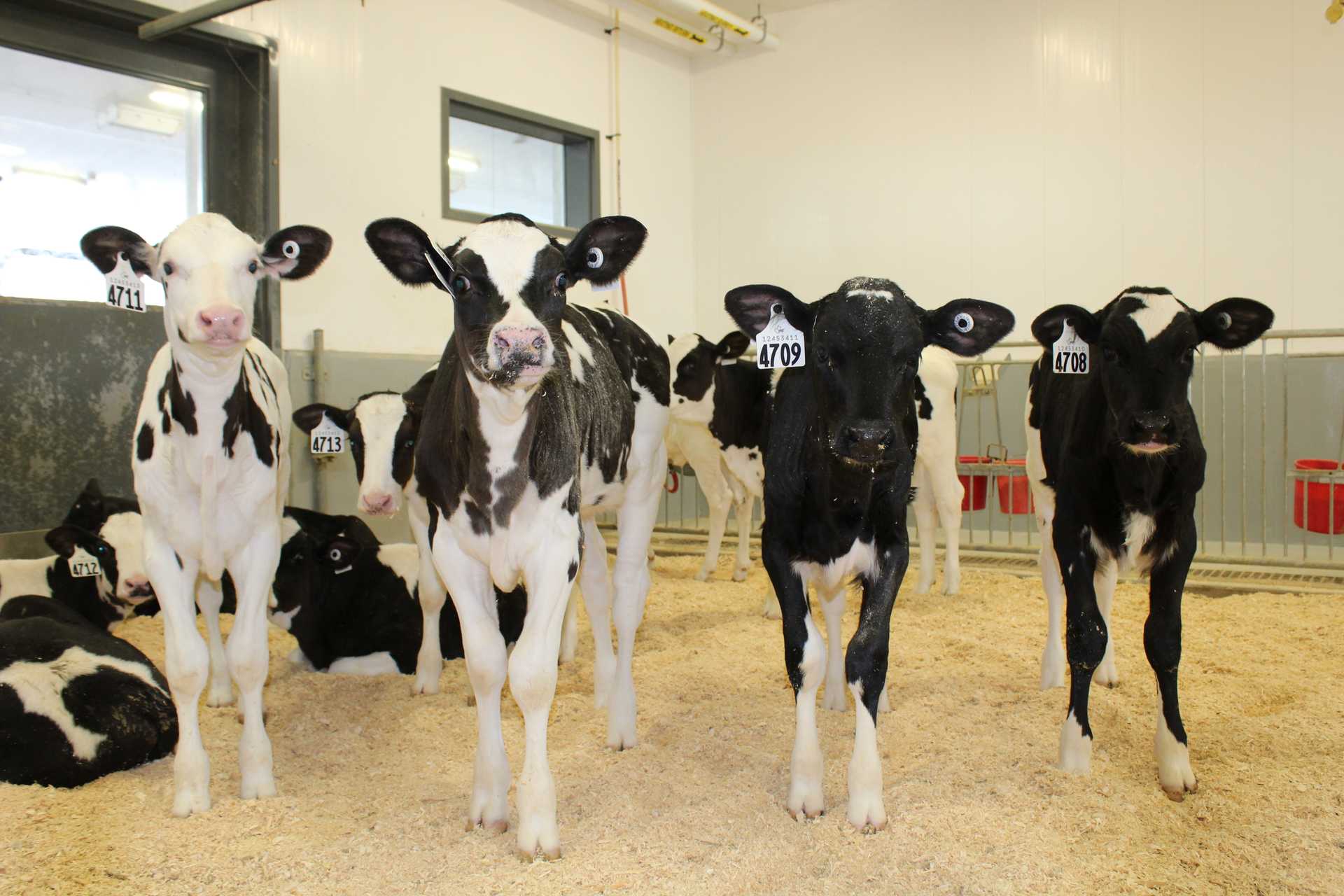
OVC Researchers Focus On Optimal Care for Calves
September 01, 2021
Optimizing care for calves sets them up for success in the future
Healthier dairy herds may result from paying more attention to farmers’ calf care practices, researchers at the University of Guelph’s Ontario Veterinary College (OVC) have found.

In this first-time study, Dr. Devon Wilson, veterinarian and PhD student, and Dr. David Renaud, professor in OVC’s Department of Population Medicine, used focus groups of dairy farmers to explore male and female calf care practices and suggest improvements.
Early calf care is crucial to promoting calf development and decreasing disease susceptibility later in life but providing optimal calf care remains a challenge. Care of female calves is often prioritized, and more research is needed to understand what factors contribute to this disparity.
“It’s known that male dairy calves can receive a lower quality of care, but before our study, the factors that influenced this difference were unknown,” says Wilson. “Our research sought to understand how variable dairy farmer perspectives translated into the well-being of their calves.”
In February 2020, the researchers organized four focus groups, each with five to seven Ontario dairy farmers. Producers were asked about newborn care practices and any differences in care of female and male calves.
Several factors contributed directly or indirectly to differences in producer perspectives.
Some dairy producers were uncertain about best management practices surrounding calf care, says Wilson.
This knowledge gap was a major barrier directly contributing to calf well-being.
“We also found that it was important to understand how producers accessed information about calf care practices,” says Wilson. “Sufficient knowledge on care practices improves the development of disease-mitigation strategies, leading to a healthy herd.”
Wilson says lack of standard best management practices in calf care indicates a need for more education on topics, such as methods to treat and prevent disease.
Another barrier to calf well-being was the time and work involved in caring for newborn calves, which made it laborious for dairy producers to adopt better management practices, particularly for male calves.
Lack of physical resources and infrastructure limitations also contributed to calf health challenges.
For example, poor ventilation in some dairy production facilities increased the risk of calf pneumonia.

Despite several barriers, producers took pride in providing optimal health care for calves.
“While conducting the focus groups, we found that producers were eager to ask questions,” she says. “Their willingness to participate in discussion suggests that more educational and experiential learning opportunities for dairy producers could be a good way to optimize calf care practices."
Providing optimal calf care not only reduces the risk of morbidity and mortality but also can lessen antimicrobial use and the cost of rearing young calves.
“Understanding producer perspectives on calf care is important for developing strategies that could motivate on-farm change,” says Wilson, “and evaluating differences between males and females can help tailor intervention strategies for the different groups.”
This research is supported by the National Institute of Food and Agriculture within the United States Department of Agriculture.
.png)